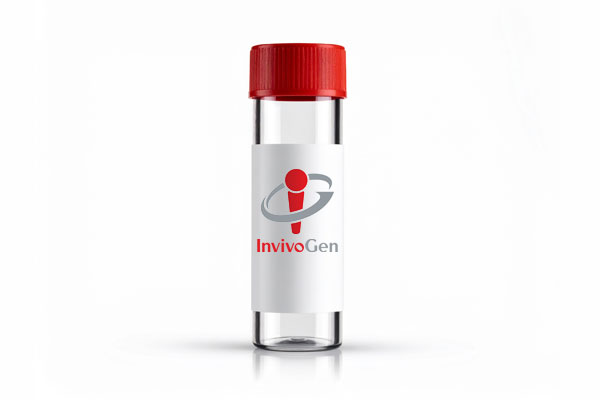Anti-hPD-L2-mIgG2a
-
Cat.code:
hpdl2-mab10
- Documents
ABOUT
Recombinant anti-human PD-L2 - For Bio IC™ assay and detection
Anti-hPD-L2-mIgG2a is a recombinant monoclonal antibody (mAb) designed for use with PD-1/PD-L2 cellular assays to study immune checkpoint (IC) modulation. This mAb is derived from the 24F.10C12 clone, targeting the human programmed death ligand 2 (hPD-L2, aka CD273).
Anti-hPD-L2-mIgG2a can be used as a benchmark antibody in our PD-1/PD-L2 Bio IC™ cellular assay, which is designed to screen antagonists, such as antibodies, Fc-fusion proteins, or small molecules, targeting the PD-1/PD-L2 axis. In addition, it is suitable for use in flow cytometry (see figures).
Key features
- Each lot is functionally tested and validated
- The complete sequence of the antibody construct has been verified
- Absence of endotoxins determined by the EndotoxDetect™ assay
All products are for research use only, and not for human or veterinary use.
SPECIFICATIONS
Specifications
PD-L2, CD273
Human
Sodium phosphate buffer with glycine, saccharose, and stabilizing agents
Negative (tested using EndotoxDetect™ assay)
PD-1/PD-L2 Bio IC™ assay, flow cytometry
Each lot is functionally tested by flow cytometry.
CONTENTS
Contents
-
Product:Anti-hPD-L2-mIgG2a
-
Cat code:hpdl2-mab10
-
Quantity:100 µg
Shipping & Storage
- Shipping method: Room temperature
- -20 °C
- Avoid repeated freeze-thaw cycles
Storage:
Caution:
Details
Programmed cell death ligand 2 (PD-L2), also known as cluster of differentiation 273 (CD273) or B7-DC, is a transmembrane protein that is mostly expressed by antigen-presenting cells, such as dendritic cells and macrophages [1]. It serves as a second ligand for programmed cell death protein 1 (PD-1), complementing PD-L1 in mediating peripheral immune tolerance and maintaining immune homeostasis during infection [1, 2].
When PD-L2 binds to PD-1 on T cells, it inhibits T cell receptor (TCR) signaling, reduces cytokine production, and limits T cell proliferation—mechanisms essential for preventing excessive immune activation. Like PD-L1, PD-L2 is also co-opted by cancer cells and tumor-associated immune cells to suppress T cell-dependent anti-tumor immunity [2,3].
Elevated PD-L2 expression has been observed in various malignancies, including lung, colorectal, as well as breast cancers, and is often associated with poor prognosis [4]. The continuous exploration of the clinical application of PD-L2 has brought exciting prospects for promoting cancer treatment, including small molecules, PD-L2-specific vaccines, and monoclonal antibodies (mAbs) [4]. However, the clinical approval of PD-L2-specific therapeutics for tumor treatment remains elusive, necessitating further investigation and discovery [4].
References
1. Latchman, Y. et al. 2001. PD-L2 is a second ligand for PD-1 and inhibits T cell activation. Nat Immunol 2, 261–268.
2. Yearley, J.H. et al. 2017. PD-L2 expression in human tumors: relevance to anti-PD-1 therapy in cancer. Clin Cancer Res 23, 3158–3167.
3. Rozali, E.N. et al. 2012. Programmed death ligand 2 in cancer-induced immune suppression. Clin Dev Immunol 2012, 656340.
4. Yang Y, et al. 2024. Programmed cell death-ligand 2: new insights in cancer. Front Immunol. 2024 Mar 28;15:1359532.
DOCUMENTS
Documents
Technical Data Sheet
Validation Data Sheet
Safety Data Sheet
Certificate of analysis
Need a CoA ?





